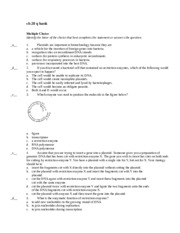
Every living species has a characteristic number of chromosomes.Tiny amounts of DNA are also found in mitochondria and chloroplasts.Almost all the DNA in a eukaryotic cell is subdivided into chromosomes in the nucleus.After fertilization (fusion of a sperm cell and an ovum), genes from both parents are present in the nucleus of the fertilized egg, or zygote.In plants and animals, sperm and ova (unfertilized eggs) transmit genes from one generation to the next.This produces copies of genes that can be passed from parents to offspring.The transmission of hereditary traits has its molecular basis in the precise replication of DNA.Most genes program cells to synthesize specific enzymes and other proteins whose cumulative action produces an organism’s inherited traits.Cells translate genetic “sentences” into freckles and other features with no resemblance to genes.This is analogous to the symbolic information of language in which words and sentences are translated into mental images.Genetic information is transmitted as specific sequences of the four deoxyribonucleotides in DNA. Genes program specific traits that emerge as we develop from fertilized eggs into adults.Your genome is comprised of the tens of thousands of genes that you inherited from your mother and your father.Parents endow their offspring with coded information in the form of genes.Genetics is the scientific study of heredity and variation.Ĭoncept 13.1 Offspring acquire genes from parents by inheriting chromosomes.

Farmers have bred plants and animals for desired traits for thousands of years, but the mechanisms of heredity and variation eluded biologists until the development of genetics in the 20th century.



 0 kommentar(er)
0 kommentar(er)
